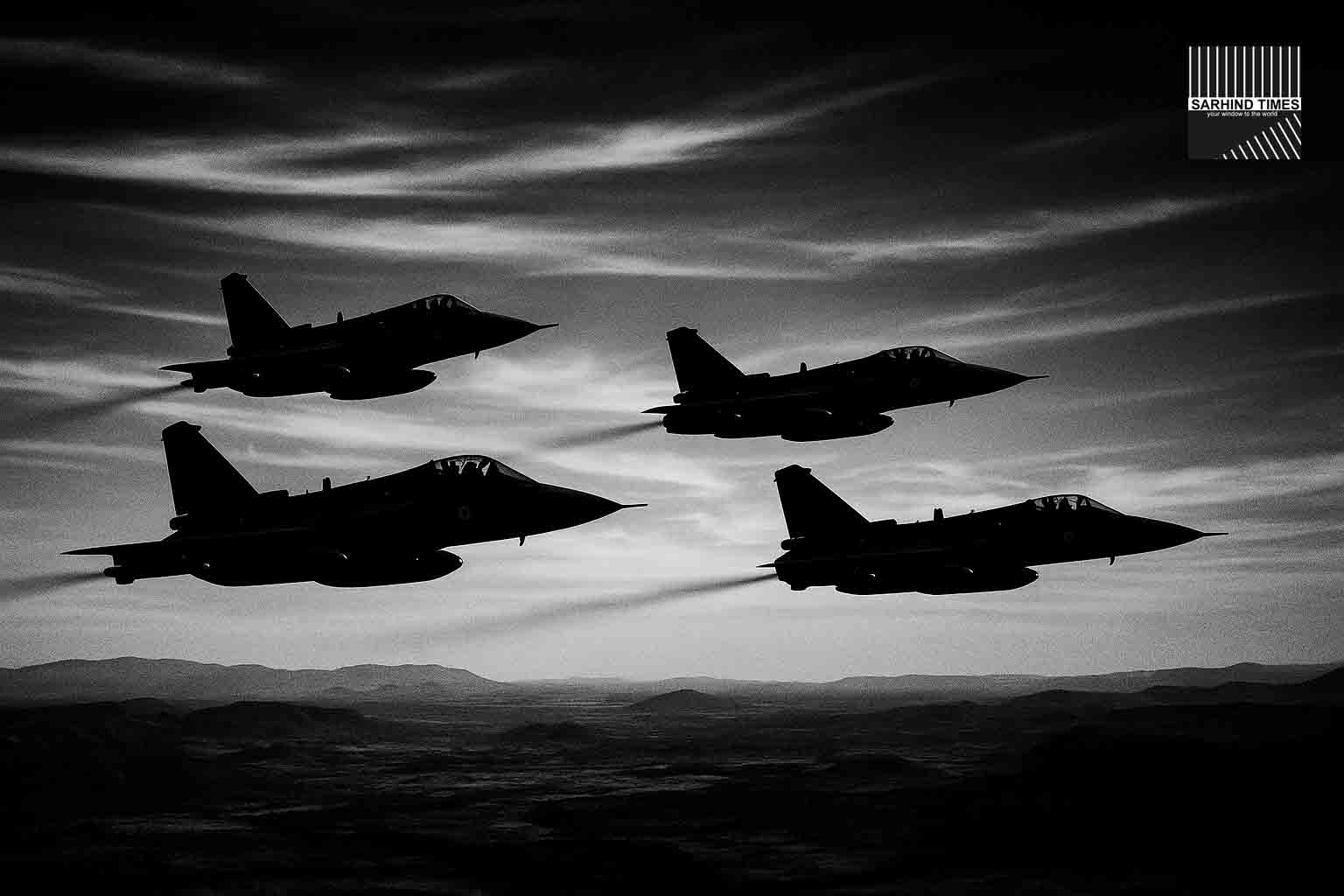In a decisive stride toward defence self-reliance, the Government of India has signed a monumental ₹62,370-crore contract with Hindustan Aeronautics Limited (HAL) to procure 97 Tejas Mk-1A light combat aircraft for the Indian Air Force (IAF). The deal, finalized on 25 September 2025, involves 68 single-seat fighters and 29 twin-seat trainer variants. With this agreement, New Delhi aims not only to rejuvenate an ageing fleet but also to turbocharge the nation’s aerospace supply chain and deepen the “Make in India / Aatmanirbhar Bharat” narrative.
This acquisition is slated to begin deliveries in 2027–28, and be phased over multiple years. HAL has affirmed that its production lines are now primed to meet aggressive timelines, despite past delays. Analysts suggest the scale and certainty of this contract may act as a launchpad for tier-II and tier-III suppliers, and could bolster Tejas export ambitions.
In this deep dive, we explore the strategic, industrial, technological and geopolitical contours of the deal — and what it means for India’s future in aerospace and national defence.
1. Context: Why this deal matters now
1.1 The urgency of fleet modernisation
The IAF has long grappled with the phasing out of legacy platforms such as the MiG-21, whose service life has stretched well beyond planned retirement. With squadron strength dipping below sanctioned levels, urgent replenishment is critical.
Meanwhile, threats along the western and eastern fronts, evolving aerial warfare technologies, and the need for rapid reaction capability demand newer platforms with advanced sensors, multi-role flexibility, and low maintenance overheads.
1.2 A renewed push for “Make in India”
This deal is not only about combat jets; it’s a commitment to endogenous capacity-building. The narrative aligns neatly with India’s larger goal of reducing dependency on foreign suppliers, transferring technology, strengthening defence supply chains, and cultivating an ecosystem that can sustain future aircraft development.
By locking in a large order, the government provides demand certainty to smaller vendors across composites, avionics, electronics, structural components and logistics — a key step toward lowering costs and improving timelines.
1.3 Building on earlier commitments
This is not India’s first Tejas Mk-1A contract. In February 2021, the government had already placed an order for 83 Mk-1A aircraft.
However, deliveries under that contract have been delayed, primarily due to engine supply bottlenecks, supply chain disruptions, and certification challenges.
This new contract not only expands the total commitment to the Tejas programme, but also signals renewed confidence in HAL’s ability to deliver at scale.
2. Deal structure, timeline and deliverables
2.1 Key contract terms
- Aircraft count: 97 total — 68 single-seat fighters + 29 twin-seat trainers
- Value: ₹62,370 crore (excluding taxes)
- Inclusion: The contract covers aircraft with associated equipment, support systems, and integration.
- Phasing: Deliveries begin 2027–28 and continue over multiple years (likely spanning six years)
2.2 Production ramp-up and readiness
HAL has reportedly upgraded and prepared its production lines in Nashik (Ozar) and other facilities to absorb the scale. The shift is seen as a course correction to past overruns.
However, the success of this ramp-up depends critically on consistent engine supply, certification timelines, integration of avionics and EW suites, testing, and logistics. HAL will also need to coordinate closely with private and MSME suppliers of composites, sensors, electronics and structural parts.
2.3 Engine supply: a key risk factor
One of the persistent bottlenecks in earlier Tejas deliveries has been the supply of GE F404-IN20 engines.
After a two-year delay, GE delivered the first F404 engine in March 2025.
GE has committed to deliver two engines per month until March 2026, after which the rate may increase.
Any mismatch in engine delivery versus airframe production could create a “production balloon” effect (airframes waiting for powerplants), elongating timelines and piling up inventory risk.
2.4 Certification, testing & weapon integration
Tejas Mk-1A will carry advanced avionics, AESA radar, electronic warfare (EW) suites (e.g. Swayam Raksha Kavach), and the ability to host a range of indigenous and foreign weapons.
A challenge remains in integrating and certifying weapons such as the indigenous Astra missile. Earlier, Tejas had a failed Astra firing test, which required software tweaks and re-validation.
Given the complexity of avionics, radar, EW, flight control actuators and software, certification cycles could stretch, requiring buffer periods in scheduling deliveries.
3. Strategic and Defence implications
3.1 Bolstering deterrence and operational coverage
Deploying an expanded Tejas fleet will allow the IAF to distribute squadrons across strategic bases along the western and eastern borders, improving quick reaction alert (QRA) coverage and resilience. The light combat nature of Tejas makes it suitable for agile air defence, interception, strike, and maritime roles.
In particular, having more indigenous jets reduces dependence on foreign platforms during crises, and mitigates diplomatic or supply chain risk in contested times.
3.2 Supply chain industrial catalysis
A large order of this nature unlocks scale incentives for smaller vendors. Suppliers of composites, electronics, radome materials, actuation systems, control software, radar modules, EW subsystems, test equipment, logistics, maintenance and repair can see predictable demand and investment viability.
This is precisely what analysts mean by “cascading benefits” — when a big contract anchors a supply ecosystem that in turn supports ancillary industries, employment, technology diffusion, and cost reduction over time.
3.3 Export potential and soft power
With a firm production base and improved delivery performance, India can pitch Tejas for export to friendly nations seeking cost-effective light combat aircraft. Several Southeast Asian, African and Latin American countries are likely markets, especially those seeking fourth-generation platforms with good lifecycle support.
The credibility of export depends on on-time deliveries, sustainment support, upgrade paths, and political alignment. A credible domestic programme is a precondition for conversion into an export brand.
3.4 Geopolitics and strategic autonomy
From a geopolitical lens, this deal reinforces India’s intent to reduce reliance on foreign defence giants. It signals to China, Pakistan and other regional powers that Delhi is willing to back its claims with indigenous force development.
It also opens opportunities for technology tie-ups, joint development, co-production with friendly nations, and strategic leverage in defence diplomacy.
4. Challenges, risks and mitigants
4.1 Past delays and credibility gap
HAL and the MoD must contend with the skepticism engendered by earlier delays. The 2021 Tejas order saw several schedule slippages due to engine delays, certification issues and vendor constraints.
To win stakeholder confidence, HAL has to demonstrate discipline, transparency in progress, realignment of incentives, and rigorous oversight of vendor performance.
4.2 Engine delivery mismatch
As noted, the pace of engine deliveries from GE remains a critical path. Any shortfall or delay will cascade down to airframe deliveries, create stockpile risk, inflate costs, and strain finances.
Mitigation could include advance contracting, penalty clauses, dual sourcing (if feasible), or developing limited indigenous backup support (though full indigenous high-thrust engines are longer term).
4.3 Certification & integration bottlenecks
The integration of advanced avionics, radar, EW, and weapon systems across multiple airframes is a complex orchestration. Delays in testing, validation or regulatory clearance (by agencies such as CEMILAC) can stall rollouts.
A robust risk buffer, overlapping test schedules, modular integration approaches, and faster decision cycles are essential to avoid cumulative delays.
4.4 Cost escalation & inflation
Over a multi-year contract, inflation, currency depreciation, raw material cost volatility, supplier margins and logistic cost escalations may bite. The contract must build in escalation mechanisms, but cost control and supply chain discipline will determine ultimate value.
4.5 Sustainability of demand & future relevance
As air warfare evolves (stealth, unmanned systems, hypersonics, AI), light combat aircraft must remain upgradeable. The Tejas platform must be modular and future-ready, with upgrade paths to incorporate new sensors, weapons, networking and optionally unmanned teaming anchors.
HAL and the MoD must avoid obsolescence traps by planning for midlife upgrades, possible re-engining, and software-defined avionics refresh.
5. Roadmap to execution: What needs to happen now
| Key Domain | Action Items | Critical Dependencies |
| Production & capacity | Expand assembly lines, add shifts, cross-train manpower | Vendor readiness, tooling, quality control, hiring/training |
| Vendor management | Integrate tier-II/III suppliers into the schedule, block long-lead items | Predictable payments, performance contracts, supply chain coordination |
| Engine supply | Ensure GE meets committed ramp, possibly diversify supply buffers | Contract oversight, penalty enforcement, alternate spares |
| Certification & testing | Parallel testing, modular integration, early validation | Sufficient test assets, regulatory approvals, software maturity |
| Logistics & sustainment | Plan spares pipeline, maintenance hubs, training infrastructure | Forecasting, warehousing, SMUs (Shop Modules), life-cycle planning |
| Monitoring & transparency | Establish real-time dashboards, third-party audits, government oversight | Data discipline, accountability, performance metrics |
If these items are handled in concert, there’s a realistic path for HAL to deliver 10–20 aircraft per year mid-contract, with frontloaded deliveries to build trust and credibility.
6. What does success look like?
- Timely deliveries: HAL actually meets or outpaces the delivery schedule, unlike past hiccups.
- Cost control: The average cost per jet stays within budget, even with escalation built in.
- Industrial scale effects: Several new MSME and supplier clusters gain viability and expand.
- Export wins: Tejas begins to find overseas customers, contributing export dollars and prestige.
- Upgrade footprint: Mk-1A becomes a platform for modular upgrades (Mk 2, potential re-engine, networking).
- Strategic autonomy: India’s ability to field, maintain and evolve its combat air fleet becomes less vulnerable to external shocks.
7. Conclusion
The ₹62,370-crore Tejas Mk-1A contract is more than a defence procurement — it’s a turning point in India’s aerospace journey. If executed well, it could transform HAL into a credible global fighter supplier, catalyse a vibrant aerospace ecosystem, and help India assert air power more confidently from its own design bench.
Yet, the path is fraught with risks: engine delays, certification bottlenecks, vendor constraints, cost overruns, and shifting tech paradigms. Success will demand disciplined execution, transparency, course corrections, and steady government backing.
For the Indian Air Force, the deal promises a rejuvenated fleet, improved readiness, and an aircraft designed to be Indian at heart. For India’s defence vision, it is a bold bet on self-reliance.
#Tejas #HAL #IAF #MakeInIndia #AtmanirbharBharat #Defence #Aerospace #LCA #IndianAirForce #IndigenousCapability






















+ There are no comments
Add yours